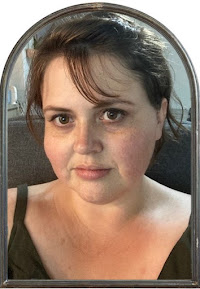Waldolf Steiner education the Pros and cons
So you want to know if Waldolf Steiner is for you?
All toys and materials used are natural, no plastic or artificial or fake toys or materials are used in the classroom. This means wooden toys, bees wax crayons, chalk boards are a common teaching tool as teachers create large colorful drawings.
This curriculum idea is sometimes called Steiner Education or Waldolf. Steiner education is very focused on the arts and imagination. Founded in the early 20th century, Waldolf education is based on the insights, teachings and principles outlined by the artist and scientist Rudolf Steiner.
Main Philosophies and teachings
Some of the more common teachings are that children don't learn to formally write or spell until they are 7. This is because they believe that children do not have the capacity to understand what they are doing until that age. Before this they are taught form through drawing pictures shaped like letters, such as the below image of a mountain for the letter M. They also learn rhythm and rhyme which helps them to understand the structure of speech and writing through the memorization of poems and limericks.
 |
| Source: Waldolf constantia |
All toys and materials used are natural, no plastic or artificial or fake toys or materials are used in the classroom. This means wooden toys, bees wax crayons, chalk boards are a common teaching tool as teachers create large colorful drawings.
Work books are large and blank, no lines. This is because children lack the ability to control and make fine drawings. The books are brightly colored and allow a child to take up as much space as they wish in their work.
There is a strong theme of folk lore. Many woldolf stories feature gnomes and fairies as this encourages story telling, imagination and creativeness in a child. They celebrate alot of the folklore holidays such as a lantern walk in November where children create a lantern from sticks and tissue paper with leaves and flowers embedded in it then gather in the darkness with their lanterns singing into the woods to light the way to winter. They also celebrate St. Nicholas Day, Santa Lucia day, spiral of light as well as many others which encourage children to recognise the changing of the seasons and participate in festivals with their families.
A walk is taken every day rain or shine as outdoors is seen as embracing a childs world. They wear a beanie or hat outdoors often handmade and indoors they have slippers to keep their feet warm and clean. The food eaten is made daily including bread and soups. Often the children are encouraged to make this themselves taking turns making and serving the food to their class.
Even in the later years of Woldolf education there is a strong emphasis on the arts with drama, wood working and music playing a larger role. Children are given lessons on an instrument, in the early years this is clapping and singing developing rhythm, then progresses to a wooden flute then violin or another string instrument in the primary and highschool years (5-16yrs old in Australia).
Cons of Steiner education
As with any learning style there are things that I feel do not work with this style of education. These are my own views.
The focus on the arts is great but can mean that children who are very academically intelligent can be left behind and grow frustrated. Even if a child can read and write earlier they won't generally teach this in school until the scheduled ages of 7-8.
Taking the only Steiner school in my area as an example they can also be very academically minded for a system that is based on the arts. My neighbours kids attended and they had so much homework and book work. Even though this was beautifully curated it was still hours of homework. Unfortunately applying this philosophy in a classroom setting isn't really what it was designed for. A true Steiner class is very open and free flowing where children can move around, not sitting at desks looking at a board no matter what those desks and board are made of or contain.












